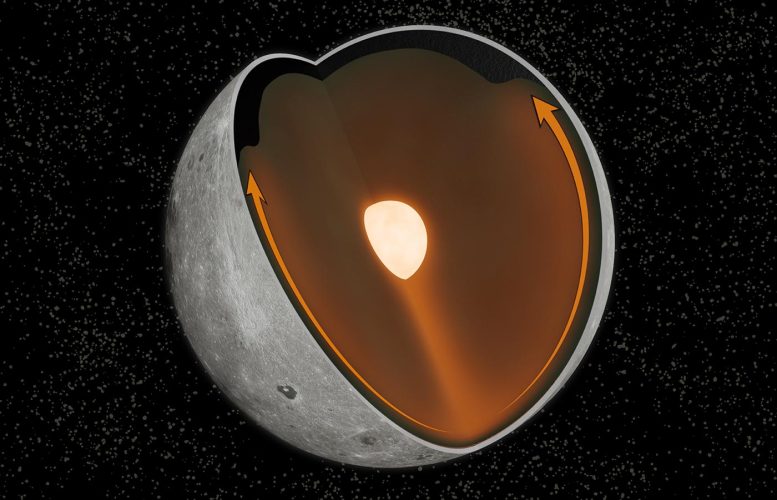
Ново проучване разкрива, че древен сблъсък на южния полюс на Луната е променил моделите на конвекция в лунната мантия, фокусирайки се върху група топлинни елементи от близката страна. Тези елементи изиграха роля при формирането на огромната лунна подкова, видима от Земята. Кредит: Мат Джоунс
Ново изследване показва как въздействието от Южния полюс на Луната – басейна Айткен е свързано с резкия контраст в състава и външния вид между двете страни на Луната.
Лицето, което Луната показва на Земята, изглежда много различно от това, което крие от другата си страна. Близката страна е доминирана от лунни персийци – огромните, тъмно оцветени останки от древни потоци лава. От друга страна, пълната с кратери далечна страна е практически лишена от обширни характеристики на кобила. Причината за голямата разлика между двете страни е една от най-трайните мистерии на Луната.
Сега изследователите имат ново обяснение за двуличната луна – обяснение, свързано с гигантски удар преди милиарди години близо до южния полюс на Луната.
Ново проучване, публикувано в Science Advances, показва, че ударът, който е образувал гигантския басейн на Южен полюс-Айткен (SPA) на Луната, би създал масивен поток топлина, разпространяващ се във вътрешността на луната. Този шлейф би задържал определени материали – комбинация от редкоземни и топлинни елементи – както и близката луна. Тази концентрация на елементи би могла да допринесе за вулканичната активност, довела до създаването на близките вулканични равнини.
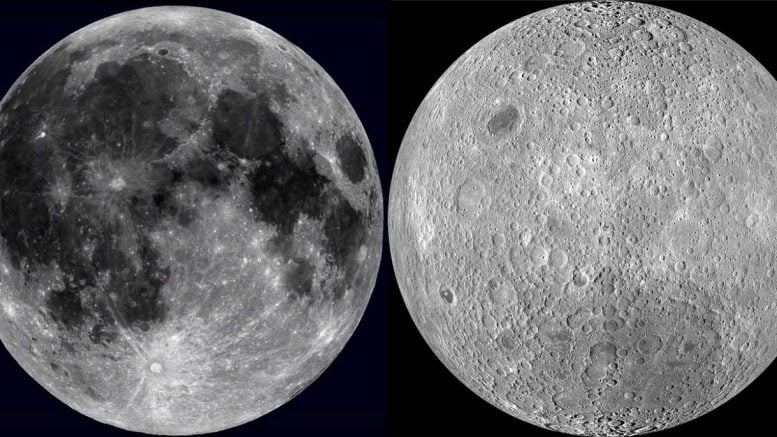
Обширните вулканични отлагания доминират от близката страна на Луната (вляво), докато далечната страна (вдясно) съдържа много по-малко. Причината за голямата разлика между двете страни е мистерията на вечната луна. Кредит: Университет Браун
„Знаем, че големи въздействия като това, което оформи SPA, ще създадат много топлина“, каза д-р Мат Джоунс. Кандидат в университета Браун и водещ автор на изследването. Въпросът е как тази температура влияе на вътрешната динамика на Луната. Това, което показваме, е, че при всякакви разумни условия по време на образуването на SPA, той в крайна сметка концентрира тези елементи, произвеждащи топлина от близката страна. Предполагаме, че това е допринесло за топенето на мантията, което доведе до потоците от лава, които виждаме на повърхността. „
Проучването е в сътрудничество между Джоунс и неговия съветник Александър Евънс, асистент в университета Браун, заедно с изследователи от университета Пърдю, Лабораторията за лунни и планетарни науки в Аризона, Станфордския университет и[{“ attribute=““>NASA’s Jet Propulsion Laboratory.
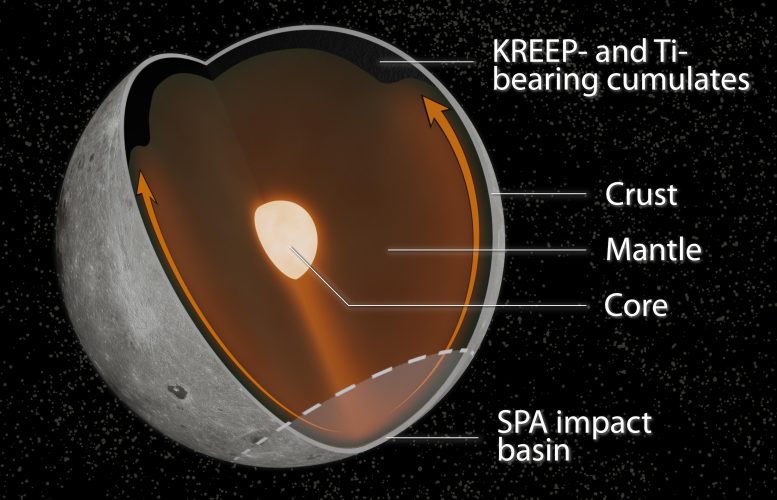
A new study reveals that an ancient collision on the Moon’s south pole changed patterns of convection in the lunar mantle, concentrating a suite of heat-producing elements on the nearside. Those elements played a role in creating the vast lunar mare visible from Earth. Credit: Matt Jones
The differences between the near and far sides of the Moon were first revealed in the 1960s by the Soviet Luna missions and the U.S. Apollo program. While the differences in volcanic deposits are plain to see, future missions would reveal differences in the geochemical composition as well. The nearside is home to a compositional anomaly known as the Procellarum KREEP terrane (PKT) — a concentration of potassium (K), rare earth elements (REE), phosphorus (P), along with heat-producing elements like thorium. KREEP seems to be concentrated in and around Oceanus Procellarum, the largest of the nearside volcanic plains, but is sparse elsewhere on the Moon.
Some scientists have suspected a connection between the PKT and the nearside lava flows, but the question of why that suite of elements was concentrated on the nearside remained. This new study provides an explanation that is connected to the South Pole–Aitken basin, the second largest known impact crater in the solar system.
For the study, the researchers conducted computer simulations of how heat generated by a giant impact would alter patterns of convection in the Moon’s interior, and how that might redistribute KREEP material in the lunar mantle. KREEP is thought to represent the last part of the mantle to solidify after the Moon’s formation. As such, it likely formed the outermost layer of mantle, just beneath the lunar crust. Models of the lunar interior suggest that it should have been more or less evenly distributed beneath the surface. But this new model shows that the uniform distribution would be disrupted by the heat plume from the SPA impact.
According to the model, the KREEP material would have ridden the wave of heat emanating from the SPA impact zone like a surfer. As the heat plume spread beneath the Moon’s crust, that material was eventually delivered en masse to the nearside. The team ran simulations for a number of different impact scenarios, from dead-on hit to a glancing blow. While each produced differing heat patterns and mobilized KREEP to varying degrees, all created KREEP concentrations on the nearside, consistent with the PKT anomaly.
The researchers say the work provides a credible explanation for one of the Moon’s most enduring mysteries.
“How the PKT formed is arguably the most significant open question in lunar science,” Jones said. “And the South Pole–Aitken impact is one of the most significant events in lunar history. This work brings those two things together, and I think our results are really exciting.”
Refernece: “A South Pole–Aitken impact origin of the lunar compositional asymmetry” by Matt J. Jones, Alexander J. Evans, Brandon C. Johnson, Matthew B. Weller, Jeffrey C. Andrews-Hanna, Sonia M. Tikoo and James T. Kean, 8 April 2022, Science Advances.
DOI: 10.1126/sciadv.abm8475

„Тотален фен на Twitter. Нежно очарователен почитател на бекона. Сертифициран специалист по интернет.“


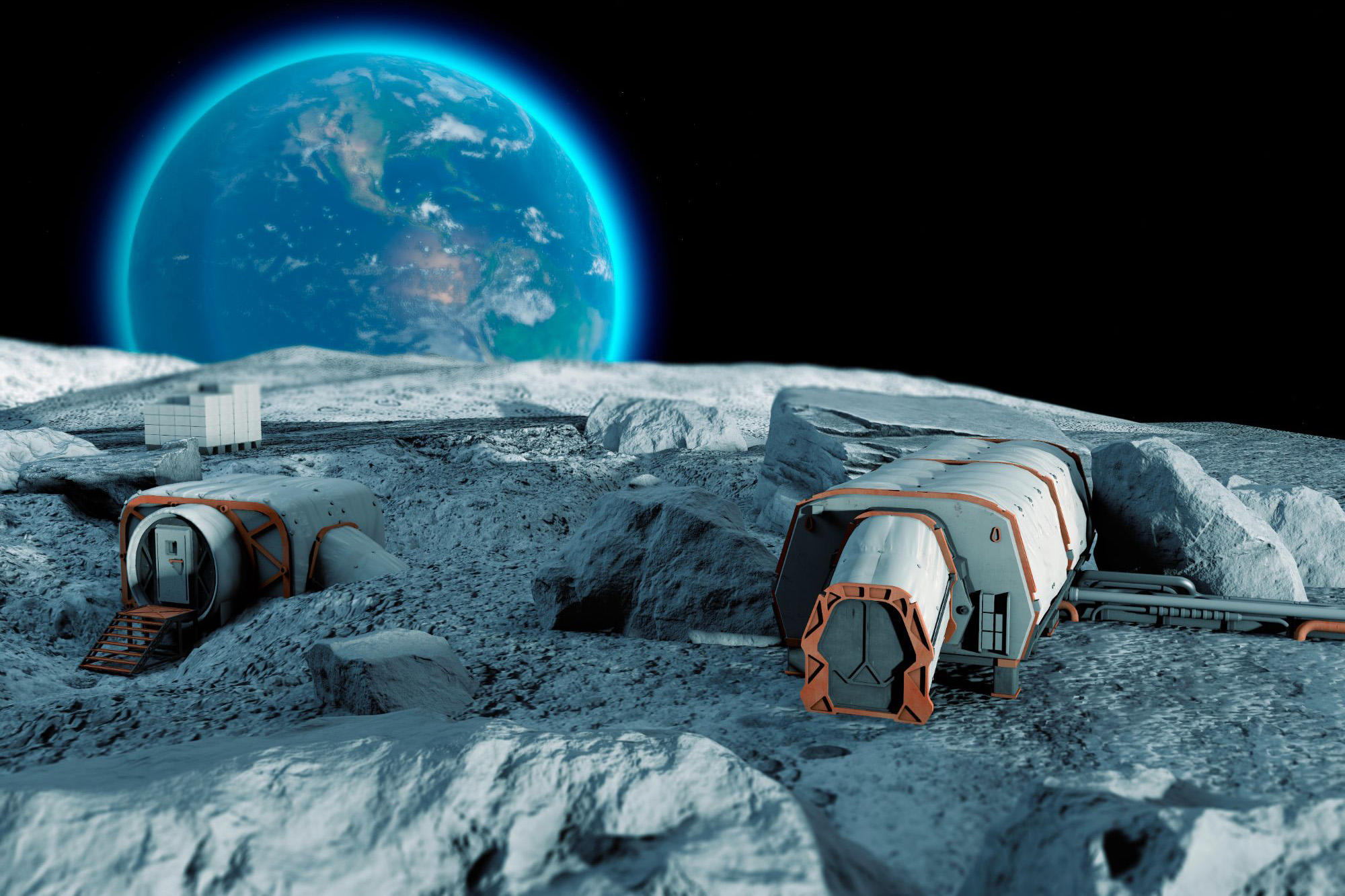

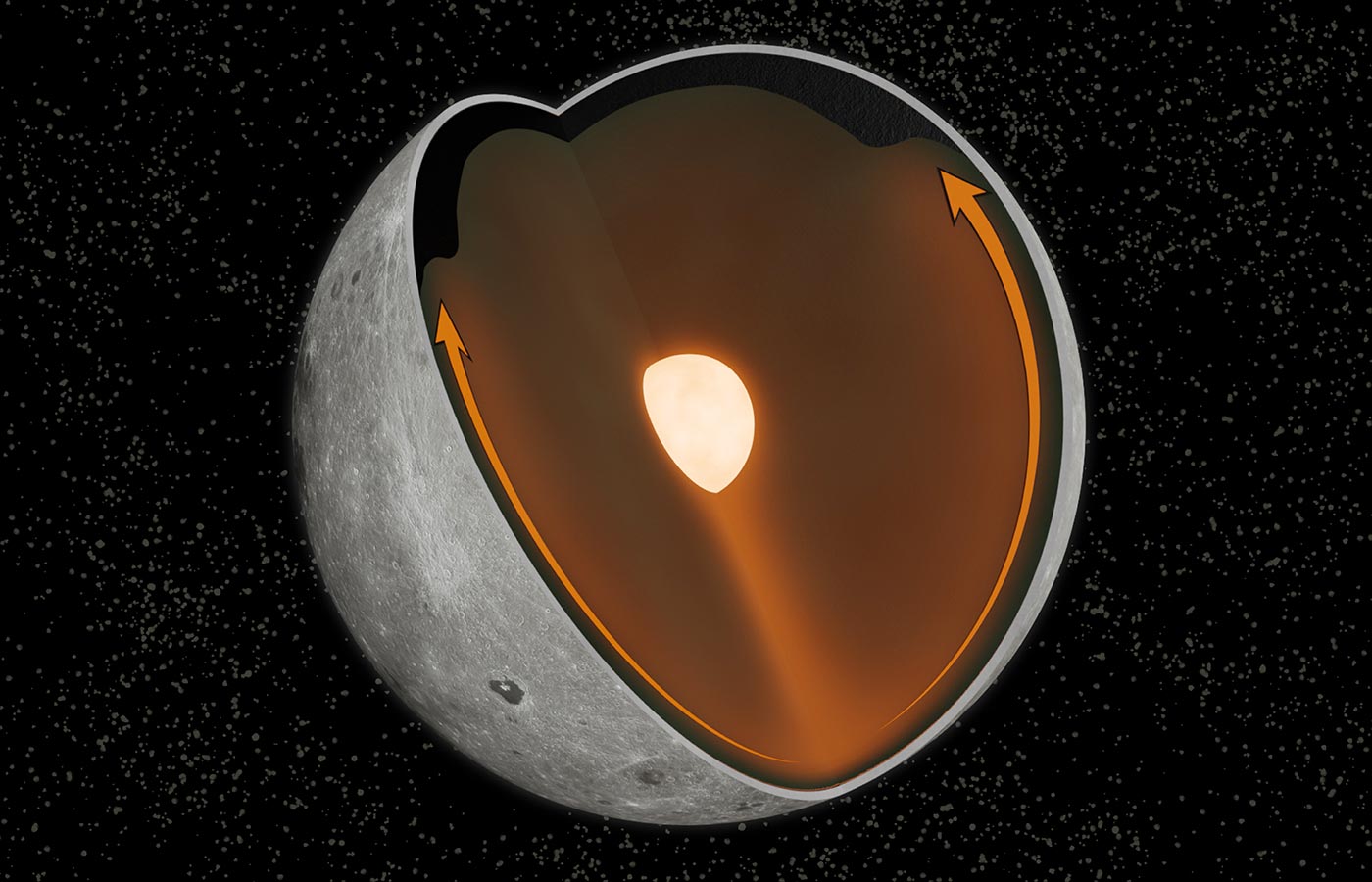

More Stories
Как учените смятат да построят база на Луната?
„Треска на ленивец“ или Оровирус навлезе в Съединените щати от Куба – ето какво трябва да знаете
Идентични следи от стъпки на динозаври открити на два континента